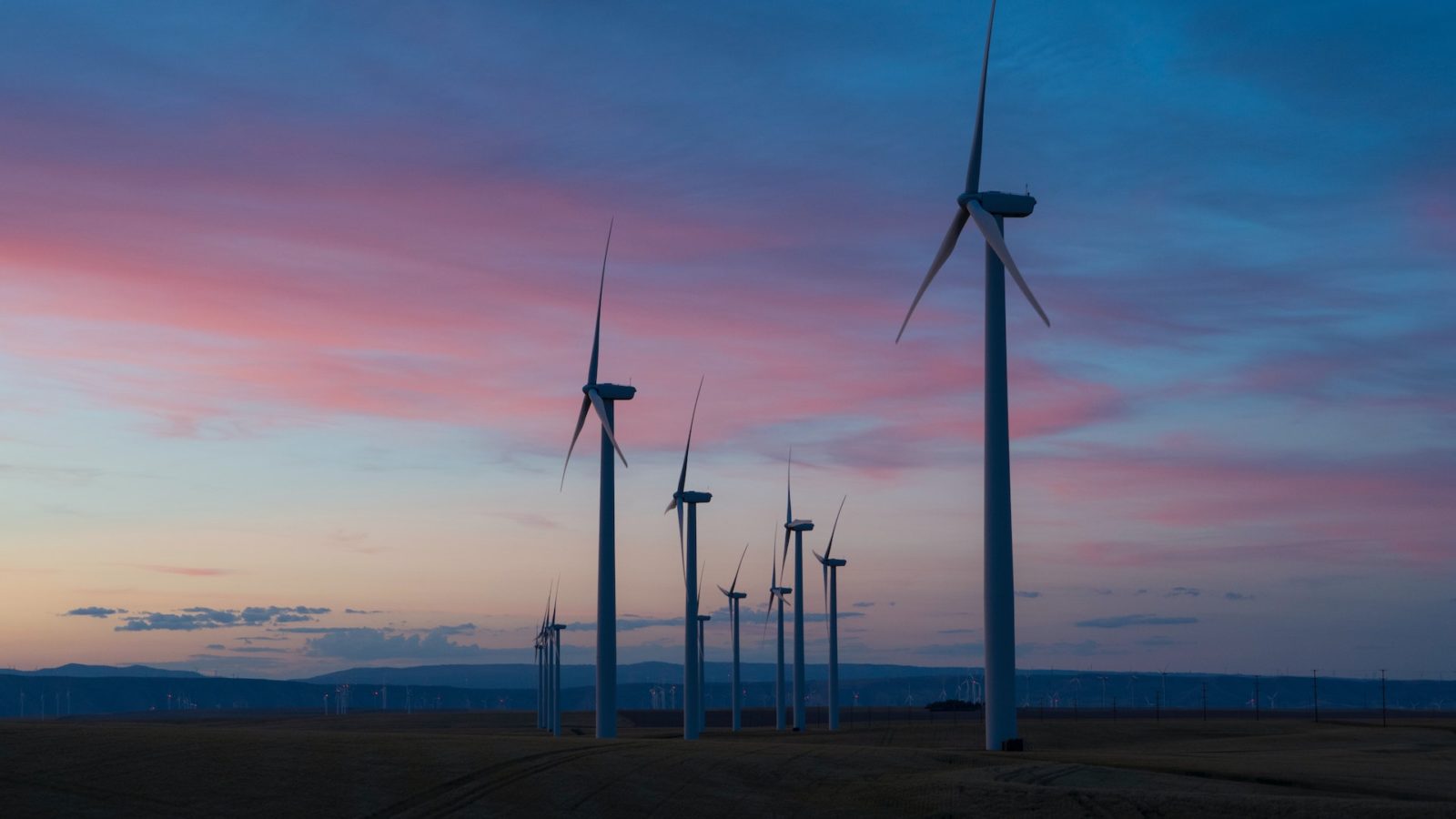The past few years, climate news in Oregon has revolved around a bitter and complicated legislative fight over cap-and-trade, which Climate XChange has covered extensively. Positive climate developments out of Oregon have been rare as of late, so it wouldn’t be surprising if climate activists lost sight of the fact that the state has an impressively strong climate proposal, which is moving forward on schedule and as planned. The Executive Order includes a myriad of comprehensive policies for climate activists to be excited about, but rarely do news outlets cover what happens after a big initiative like this is announced. This article will focus on just that: how the implementation of Governor Kate Brown’s Executive Order is going, and what challenges it is facing.
The Executive Order
Governor Kate Brown announced Executive Order 20-04 on March 10th, surrounded by children and teenagers who had come of age lobbying at the capitol for climate bills which would ultimately never be voted on. The order came just days after yet another Republican walkout prevented both the Senate and the House from passing an economy-wide cap-and-trade program. The provisions in the Executive Order constitute the Oregon Climate Action Plan (OCAP), which orders every relevant state agency to address climate change in a variety of very specific ways.
First and foremost, OCAP institutes a statewide emissions reduction target of 45% by 2035 and 80% by 2050, the exact same targets of the cap-and-trade bill that was never voted on in either legislative chamber. It provides $5 million for the Department of Environmental Quality (DEQ) to enforce these targets by regulating emissions from carbon emitting industries, gas and diesel, and natural gas. The DEQ is expected to have the “lion’s share” of the work implementing the various programs outlined by OCAP.
OCAP also contains a number of directives for lowering emissions in other sectors. It strengthens Oregon’s Clean Fuels Program to make it the most ambitious low carbon fuel standard in the country: 25% emissions reduction by 2035. It also attempts to accelerate electric vehicle adoption by enabling more ambitious EV investments for utilities, developing a plan to rapidly transition state fleets to zero emission vehicles, expanding charging infrastructure in public buildings, and requiring the Department of Transportation to analyze electrification needs throughout the state.
Outside of vehicles, OCAP includes provisions requiring new buildings to be built with zero energy standards and with at least a 60% emissions reduction in annual site consumption, and provisions to maximize energy efficiency of appliances. Finally, OCAP directs state agencies to prioritize actions that reduce emissions and incorporate climate change mitigation into their budgets and planning activities. Throughout all of these provisions, the vast majority of emissions in the state of Oregon will now be addressed in some way via OCAP programs.
Furthermore, OCAP includes another hard-earned provision outside of direct emissions reduction— it requires agencies to consult with a new Environmental Justice Task Force and other communities on the frontlines of climate change to help them adapt to impacts. The DEQ is directed to have regular engagement with this taskforce, and must also give tribal leaders and impacted community members seats on its own rulemaking task force. OCAP also requires other agencies to prioritize actions that help impacted communities adapt to our changing climate. For example, it directs the Public Utilities Commission (PUC) to consider and mitigate low-income communities’ energy burden, or percentage of household income that goes toward energy costs. It also requires the Oregon Health Authority (OHA) to report the public health impacts of climate change. Long story short, OCAP has the potential to be one of the leading environmental justice climate plans in the country.
The Next Steps
The regulated agencies are responding enthusiastically to their new mandates, perhaps since some type of climate action has already been part of their mandate. So far, 12 agencies have submitted initial reports detailing how they plan to address OCAP, and many included actions in addition to those directed by OCAP. The PUC is considering incorporating the social cost of carbon into its utility planning, in order to fulfill its “mitigate energy burden” mandate. PUC is also hiring a new Diversity, Equity, and Inclusion (DEI) outreach coordinator, conducting a DEI outreach plan, and streamlining the approval process for projects aimed at helping low-income ratepayers. The Department of Energy is increasing the cost of new fossil energy facilities and beginning to research its most economical decarbonization options. It’s also considering updating appliance efficiency standards to save Oregonians $35 million per year on utility bills in 2025 and $100 million per year by 2035.
The Oregon Health Authority (OHA) is developing a DEI blueprint for other agencies to use when designing and implementing adaptation strategies, and building capacity for local and tribal health departments to integrate climate change into public health efforts. Overall, Oregon’s state agencies are conducting some serious makeovers to be better positioned to tackle climate change on all fronts, from public health to energy to disproportionate impacts.
Taking into consideration all of these major wins for climate action, one now must ask, what does OCAP not do? Perhaps most prominently, it does not address climate impacts via market forces like the cap-and-trade bills of the past proposed. Currently, the DEQ is going through the rulemaking process to structure a “cap and reduce” program that would limit and progressively reduce climate pollution in major emitting sectors. This is a clear nod to the “cap and invest” messaging around the carbon market legislation that never came to fruition in the legislature.
But these are not the same. Currently, OCAP relies on the DEQ’s existing authority to reduce emissions granted by the legislature in 2007. According to Brad Reed of the Renew Oregon Coalition, the DEQ has been clear that it can’t set a carbon price and market without legislation, and whether they can set up some quasi-tradable permit system is up for debate. Under OCAP, every emitting entity has a goal, and if they don’t meet it, they will be fined. While the legal question as to whether DEQ’s emissions targets are enforceable via some type of carbon market mechanism appears to remain unsettled, the general consensus among those most involved in the rulemaking process is that a carbon market is not the route OCAP will be pursuing.
The Rulemaking Process
While the announcement of OCAP is a major development for Oregon climate action, it is also important to recognize the importance of this rulemaking process. DEQ is in the early stages of the public process for how OCAP will be structured, and this structure will ultimately determine how effectively it can tackle the emissions that cause climate change. This past fall, the DEQ hosted several technical workshops and 3 virtual town halls to discuss design options. The issues being discussed include where to set the cap, which greenhouse gases should be covered, which emissions sources should be included, how quickly should the cap decline, how can priorities of environmental justice communities be incorporated, should the program allow for alternative compliance options, and many more.
So far, the vast majority of those who have shown up in the rulemaking spaces have been climate activists, according to Zach Baker from Climate Solutions, a Pacific Northwest clean energy nonprofit. Still, some representatives from oil companies like Shell, BP, and Phillips 66 have publicly expressed concerns, as well as one cofounder of Timber Unity, the preeminent conservative activist group opposing climate legislation in Oregon.
Brad Reed says that the emitting industries showing up in town halls and workshops have used their time to argue to do almost nothing for the first ten years, or each industry would make the case that they should be exempted. Reed also notes that although the climate advocates certainly outnumber the industry advocates, we won’t be able to tell if their voices outweigh the opposition until we see results of the plan. This formal rulemaking process is scheduled to conclude at the end of 2021, in time for the program to begin January 1, 2022.
The Lawsuit
Amidst this flurry of executive activity on climate, opponents have turned to the final branch of government to prevent or delay a comprehensive response: the judiciary. A coalition including the Oregon Business Industry (OBI), Oregon Farm Bureau, Oregon Manufacturers and Commerce, Oregon Forest and Industries Council, the Oregon Trucking Association, and three other individual businesses, has already filed a lawsuit against OCAP.
Joel Mullin, the lawyer for the plaintiffs, argues that the executive order is unconstitutional because it overrides emissions targets passed by the legislature in 2007. Mullin says that Governor Brown does not have the authority to make substantive changes to emissions targets and clean fuels programs established by legislature.
The lawsuit doesn’t appear to have a strong case though according to Melissa Powers, Director of the Green Energy Institute at Lewis and Clark Law School. In an interview with the Portland Business Journal, Powers explained that the emissions goal for 2050 set by the legislature was not 75%, but “at least 75%” thereby implying discretion to the executive branch for more specific rulemaking. It would be hard to argue that OCAP’s goal for 2050 of an 80% reduction goes against a statute that calls for a reduction of “at least 75%”.
Powers also explained that the legislature demonstrated it knew how to make a more specific goal for greenhouse gas emissions reductions when they set the 10% reduction by 2020 goal, further implying that it gave agencies more discretion for the 2050 goal. Finally, a lawsuit must be more than an abstract question of law and pertain to a factual controversy, so the plaintiffs must show they’re being directly aggrieved by a government’s action in order to have standing to challenge it in court.
Steve Kanter, a constitutional law professor at Lewis and Clark, says the state government could argue that the Executive Order hasn’t resulted in actual government actions affecting the plaintiffs that can be reviewed in court, since it is still in the rulemaking phase and won’t begin until 2022. The court could take a “wait and see what the rulemaking process looks like” approach according to Kanter.
The lawsuit assumes that climate change mitigation policies will raise the cost of electricity generation and hurt the state economy. Nora Apter of OEC argues that the lawsuit is delaying innovation in the renewable energy sector, thereby doing more long term harm to Oregon’s economy by making it more sluggish in catching up to its neighbors.
Some businesses who have already begun transitioning to lowering emissions agree. These businesses say the plaintiffs are deterring companies from investing in clean energy technologies, causing them to have to compete with cheaper, more polluting fuel sources. Keith Wilson, president of Titan Trucking, told Oregon Business that the Clean Fuels Program has been “instrumental” in allowing his company to be more profitable not using diesel, and that he was “extremely frustrated to see this latest attempt to stop businesses like [his] from investing in the newest and cleanest technologies.”
OBI president Sandra McDonough insists the lawsuit is about the governor rewriting the statute and setting a dangerous precedent, which transcends any particular issue. She made no comment when asked about the legislative precedent of the walkouts which led to the Executive Order in the first place. In a statement, Governor Brown connected the plaintiffs with obstructionism, saying “many of the industries behind this lawsuit used their influence to shut down the legislative branch of government. Now they want the judicial branch to shut down action from the executive branch.” Amid these tit-for-tat accusations of wrongdoing, the DEQ and other government agencies will continue to go through their OCAP rulemaking processes despite the lawsuit.
Conservative legal challenges to comprehensive legislation have been a frequent political strategy to foil progressives, as we have seen in fights over the Affordable Care Act, abortion, and even the EPA’s authority to regulate greenhouse gases at the federal level. Still, Zach Baker says the lawsuit against OCAP is more of a footnote in the Oregon political battle over climate change.
Looking Ahead
Many states were paying attention to Oregon throughout the cap-and-trade legislative fight, so it is important to recognize the significance of OCAP in this context. Oregon’s fight for statewide climate action was materializing around a carbon market, with significant buy-in from many stakeholders across the state. The final version of the cap-and-trade bill for the 2020 session had exempted the state’s agricultural and forestry sectors, and made special considerations for certain Emissions Intensive, Trade Exposed industries. Republicans walked out on that bill, and Oregon climate advocates responded with an extensive command-and-control climate program enacted by state agencies that are ultimately run by Oregon’s Democratic governor. Republicans have effectively traded a more capitalist and compromising climate agenda for a more socialist and stringent one.
Undoubtedly, OCAP is not what Oregon Republicans were hoping to end up with as they were walking out over cap-and-trade. Other state legislatures with Democratic governors will consider what happened in Oregon when carbon pricing bills come up in their chambers. Pennsylvania’s recent battle to join RGGI, the Northeast’s cap-and-trade market for the electrical sector, was ultimately won on the authority of its Democratic governor. Oregon’s neighbor to the north, Washington, plans to consider a cap-and-trade bill next session, and has a Democratic supermajority in the state legislature similar to Oregon’s. If conservatives want their voices heard in state climate policies, they will have to show up ready to negotiate in good faith. Otherwise, they will be forced to settle climate policy with desperate legal challenges to far-reaching executive orders like OCAP.
OCAP is a major climate achievement, written from the outset with the expectation of legal challenges, and those in the Governor’s office are confident that it will not be unraveled by the courts. In Oregon, there are powerful forces on both sides of the climate debate that will undoubtedly continue to use every rule and legal framework at their disposal to support or obstruct climate action. As OCAP rulemaking progresses, it appears that the advantage in Oregon’s climate action debate is shifting towards climate advocates.









